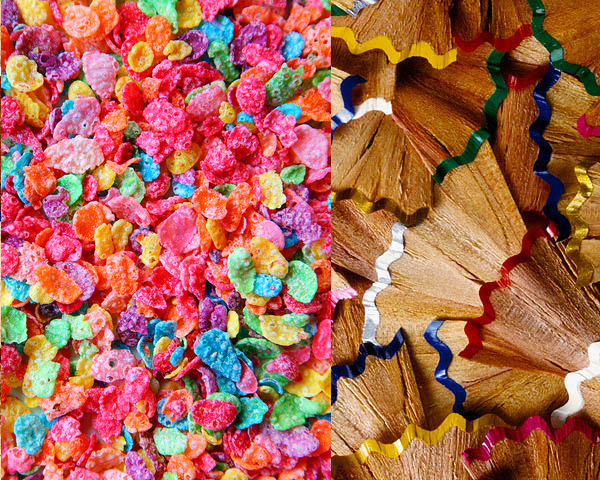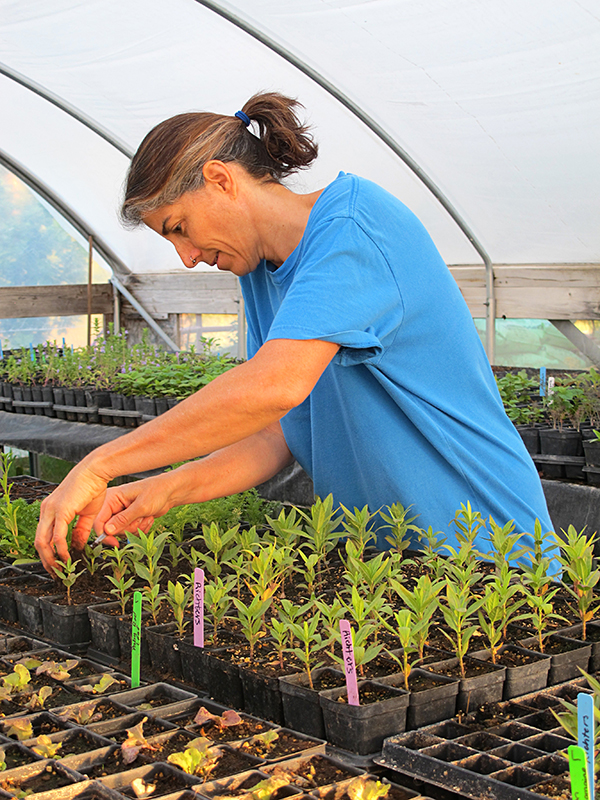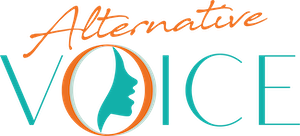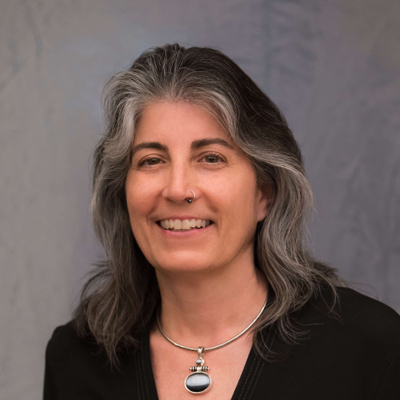For better or worse, I grew up pretty much often eating whatever I wanted, whenever I wanted, and however much I wanted. Granted, my mom had good basic boundaries (like soda only once a week at Wednesday night dinners), and she was definitely a great cook and grew a wonderful garden (as was true of all my Italian family). But as I grew into the new freedoms through my teenage years and then into young adulthood, left to my own choices (or should I say “devices” or “vices”), I left my good training behind and sadly didn’t often make the best food choices. And the worst part is, I didn’t realize it back then—not at all.
Like many in mainstream America, I was often enticed by fast food. I won’t tell you how much McDonald’s I’ve consumed (long before I saw the movie Supersize Me) as well as those addictive Dairy Queen Oreo cookie “Blizzards,” and the quick convenient ease of packaged/processed foods (can we talk about how much I just love Kraft Macaroni & Cheese in that cute little blue box with that bright yellow “cheese” mix powder?!), and boxed “cereals” (how about Sugar Pops and Cocoa Puffs?!)—all made glamorous by TV commercials, magazines, and superstars of the day back in the 1970s and 80s, when I was growing up.
 To top it off, I was blessed with a great metabolism, so literally for decades, I would unconsciously guzzle a couple milkshakes and chow down 3 orders of large fries and other “treats” often with my friends or family or sports teammates at our local hang outs, and not gain a pound, thus naively (and stupidly) thinking there were no negative side effects. So for years I was literally and unfortunately foolish enough to believe that if you didn’t gain weight, there were “no” harmful effects from what you ate.
To top it off, I was blessed with a great metabolism, so literally for decades, I would unconsciously guzzle a couple milkshakes and chow down 3 orders of large fries and other “treats” often with my friends or family or sports teammates at our local hang outs, and not gain a pound, thus naively (and stupidly) thinking there were no negative side effects. So for years I was literally and unfortunately foolish enough to believe that if you didn’t gain weight, there were “no” harmful effects from what you ate.
Do you know what breakfast cereal is made of? It’s made of all those little curly wooden shavings you find in pencil sharpeners!
– Roald Dahl
To add insult to injury, along the way, I learned (subconsciously) to use food to make myself feel good, to make me “happy,” and often to relieve stress or as a reward after winning a grueling softball game or tennis match. It was not until decades later I began to learn about serotonin and dopamine—the “feel good” chemicals produced in your brain when you eat all those high calorie, sugary, carbohydrate-based “comfort foods” and it’s incessant clamoring for “more, more, more.” Welcome to addiction. Food addiction—mentally, emotionally, and physically.
As life unfolded, I watched as my family developed a history of diabetes on my mother’s side and my father was a big sugar-holic. It was his “drug” of choice. And by my mid-twenties I, too, was well on my way to following in my family’s footsteps, unbeknownst to me at the time. In general, for most of my life, eating has been a real emotional high for me and meal times were my highlights each day (I couldn’t wait), including all the snacks I devoured in between! But it was the food, not the people or socialization, that I looked forward to. Unconsciously, I had learned to “live to eat” instead of learning to “eat to live” (for good health and to live longer).
In my mid-twenties—as I began to question life overall, my place in the world, and what I really valued and wanted to build into my reality—I started to have a spiritual awakening. And with it, everything around me began to morph, whether I liked it or not (and sometimes, I didn’t, especially at first). But I kept searching—figuratively and literally—and little by little (often by trial and error), I began finding pieces of the puzzle and answers that made sense and that I could stand by. As my values changed, it directly impacted my relationship with food and what I chose to eat. It would become an eventual deathblow to Twinkies, Taco Bell, and Twizzler’s red licorice (and I thank God, in hindsight!)
I remember the very significant beginning food change-point in my life. One day, when I was about 25 years old, I read a book by one of the heirs to the Baskin Robbins ice cream fortune, entitled Diet For A New America. The information was eye-opening for my naive mind, informing about the startling horrors and toxicity of modern-day food production and animal abuse (that seemed anything but “modern” and actually seemed barbaric) and which I had known nothing about. That became a launch point for me to start down the road of change and study, especially combined with the fact that simultaneously—and seemingly rather suddenly—every time I’d eat red meat, my body would abort it.
Our bodies are our gardens – our wills are our gardeners.
– William Shakespeare
So I decided to cut out most meat and become a kind of basically pescetarian—although I only learned that word years later—(eating fish & seafood) plus a little chicken/turkey, for a couple years. At the same time, more and suddenly trendy “health food” stores started popping up around Philadelphia (where I lived), and so I began expanding my diet with discoveries of foods like alfalfa sprouts, smoothies, and bottled (versus tap) water. For me, it was a start, albeit a small one. Soon enough, I learned about all the aspartame in my Diet Cokes (you know, the ones in the 4 or 6 aluminum cans I chugged daily?), and so I switched to clear-colored and sugar-based soda, like Sprite, as a transition step (the lesser of the evils, so to speak).
That was back in the early 1990s, and so I find it now both extremely interesting and frankly quite tragic that decades later (in July 2023) suddenly aspartame made worldwide headline news in many media outlets with articles like “Aspartame Declared Possible Carcinogen By World Health Organization (WHO).” And even more alarming (and quite telling) is that fact that simultaneously other opposing stories sprung up to try to discredit this truth, with headlines like in The Irish Times: “Aspartame Is Not, Repeat Not, A Dangerous Carcinogen.” To me, these attempts to discredit truth all echo the famous words in Shakespeare’s play Hamlet, “"The lady doth protest too much, methinks.”
Then in 1995, at the age of 30, my life journey led me to Arizona, where I joined an EcoVillage with a wonderful garden (and now farm too). I began living and hanging out with people who were into lifestyles addressing words I had not even heard of—like sustainable, permaculture, GMOs, EcoVillages, intentional communities, natural, raw and whole foods, and heritage grains—and who knew the real value of sitting down and relaxing, enjoying a meal with family and friends (where it’s about the people, not the food), and much more.
 And all along the way, I began to re-educate myself about food and genuine healthy eating—what it is and what it isn’t; what’s truly healing and nutritious and what’s actually toxic (but often very attractive and tasty—all that appealing “eye candy”); what hurts the earth and what restores our lands; what infringes terribly on human rights and what is fair trade; what my body needs to eat versus what I like to eat, and lots of other revelations and epiphanies along the way—often challenging my core values and threatening my emotional death-grip on all the foods and tastes (and memories) from childhood and all the special moments of my life that gave me comfort and some kind of “relief.” When I turned from expecting food to fill the hole in my soul and began to let God in there, things started to really get better.
And all along the way, I began to re-educate myself about food and genuine healthy eating—what it is and what it isn’t; what’s truly healing and nutritious and what’s actually toxic (but often very attractive and tasty—all that appealing “eye candy”); what hurts the earth and what restores our lands; what infringes terribly on human rights and what is fair trade; what my body needs to eat versus what I like to eat, and lots of other revelations and epiphanies along the way—often challenging my core values and threatening my emotional death-grip on all the foods and tastes (and memories) from childhood and all the special moments of my life that gave me comfort and some kind of “relief.” When I turned from expecting food to fill the hole in my soul and began to let God in there, things started to really get better.
In this decades-long transitioning, I’ve found the most solid way to make change is both to link my new choices to my new values (so they get an instant “foundation”) and also, rather than go “cold turkey” and “deprive” myself of something (which always then backfires), I find a higher/better “replacement” for something I want to move away from, and that seems to work pretty well. So I traded aspartame cola, for clear sodas, then for club soda and Perrier, and eventually for just plain water. I traded ice cream milkshakes for natural frozen-fruit smoothies. I traded rice and potatoes for a wonderful grain called quinoa and its diverse uses. I traded plastic bottles for stainless steel and glass. I traded the microwave for cast iron pans, and much much more. And all along the way I traded a shorter lifespan for an extended one, a weaker and taxed body for a more fit and healthy body and mind.
In November 2013 my “appropriate eating” education amped up even higher when I was a Host at the Food For Ascension Café in Tucson, Arizona. It was the only all-natural, GMO-free restaurant in the city, and served approximately 90% locally-grown and fresh, live foods, following the seasonal harvest and supporting local farmers and gardens, and offered a wide variety of gluten-free desserts, while providing those folks who had a desire to eat healthier a truly viable option they really enjoyed. In the year and a half I worked at the Café, I expanded my knowledge base tremendously, and I met hundreds of people who walked their talk, trying like I am to learn more, and make safer and better food choices, allying with kindred minds. Like me, they shared stories of things they gave up, in exchange for what they gained in return and, also like me, they claimed to feel better and live stronger. It was really inspiring for me to see how many people ate and lived outside the mainstream, where I almost had drowned.
At one junction along the way in my evolving food journey, while doing a 10-day watermelon cleanse, I decided to try out becoming a vegetarian and simultaneously eat in the vein primarily of a Candida diet (basically low or no: sugars, starchy carbohydrates and grains, fats, dairy, and yeasty foods). In the process, I studied and then introduced some wonderful “super food” type items into my regime, like coconut oil and coconut milk, pumpkin seeds, flax seed, and avocados, to name a few. Those 2-years of dietary changes and being vegetarian were great. I felt really good, lost 30 lbs., my energy became more stable (not those sugar-crash highs and lows), my mind became clearer, I needed less sleep, and ate more within what my body craves. In short, I ate much simpler, cleaner, and sustainably. So at this time in my life, I’m returning to the this more balanced and beneficial eating lifestyle and better habits, because over time it can become easy let ourselves lose the rhythm of higher self-discipline and fall back into “living to eat.”
Of course within the balance of a responsible eating regime, over time I also realize that my agendas and attachments to food have to flow and flex at times, based on whatever I’m blessed with that’s in front of me today, and that now and then some of the “worst” food is very good for me in the right company and intentions, and some of the “best” food is ruined by rigid or fundamentalist thinking or bad company. At this point, I try to remind myself, “When in Rome, do as the Romans do” (within reason).
So it’s an evolution for me, a journey I’m still on. And it just gets better and better with each passing year. I imagine (and intend) that I’ll continue evolving my relationship with food, and before it’s all said and done, my deep hope and wish is for all of us around the planet to have opportunities to eat a meal with some of the wonderful people in every one of the world’s countries and cultures enjoying each other—for we are all truly one planetary family. Bon appetite on this wonderful adventure we share together called LIFE and let’s eat to live!


